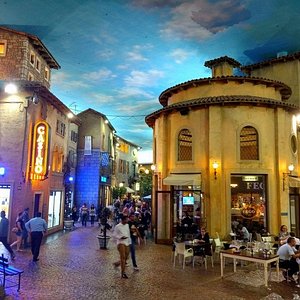Johannesburg North Attractions - Truths
Johannesburg North Attractions - Truths
Blog Article
Some Of Johannesburg North Attractions
Table of ContentsHow Johannesburg North Attractions can Save You Time, Stress, and Money.Little Known Questions About Johannesburg North Attractions.All about Johannesburg North AttractionsOur Johannesburg North Attractions IdeasAll About Johannesburg North AttractionsGetting My Johannesburg North Attractions To Work
The city owes its location to the presence of an even more precious source: gold. The city expanded on the edge of the Witwatersrand Main Coral reef, a below ground stratum of gold-bearing quartz-silica empire that arcs for thousands of miles underneath the Highveld. A lot of the gold mines in the city discontinued operation in the 1970s, however in its day the Witwatersrand gold sector made up greater than 40 percent of the globe's annual gold production.Johannesburg has a pleasant climate. The city enjoys concerning eight hours of sunshine per day in both winter and summer season.
What rain the city obtains falls nearly exclusively in the summertime months, frequently in spectacular late-afternoon electric storms. Air contamination postures a considerable trouble, particularly in the cold weather, when thermal inversions hamper the westward circulation of air from the Indian Ocean. Pollution is most extreme in the densely settled Black townships on the city's perimeter, where numerous residents still rely upon coal for fuel.

Johannesburg North Attractions - The Facts
The balance of the city is occupied by whites. Lodging differs in character and high quality.
Physical development, although somewhat restricted by transport, continued quickly as immigration to South Africa, and Johannesburg in certain, increased considerably.
Most inadequate suburban areas were mixed, with inadequate blacks and whites living together, although the well-off suburban areas were usually booked for whites.
The previous system of eleven phoned number areas was reorganised in 2006. Marshalltown, as seen from the top of the Carlton Centre. The M1 and M2 run behind the buildings, and the southerly suburban areas expand past the highway border. The central city of Johannesburg lies within the city's Region F. The approximated population of the region is 200,000, [] yet the variety of people living in the inner city on a casual basis is unknown, as several are illegal immigrants. The majority of higher-income locals and white individuals have actually moved to the north residential areas and have been replaced by lower-income black individuals. The joblessness, education, and age profiles of the location are all unidentified, as a result of the difficulty of acquiring dependable details concerning the area.
Johannesburg North Attractions for Dummies
Yeoville and Bellevue have a mix of home structures and solitary property devices on small great deals. The area is located on a hilly divide that runs from eastern to west. The most conspicuous geographic function is Observatory Ridge, which is called for the huge observatory situated on it. The entertainment spaces are no more used, because of security problems.

A Biased View of Johannesburg North Attractions
R. Tambo International Airport). The eastern suburban areas are several of the oldest areas of Johannesburg, there are large communities of Jewish and various other European backgrounds, most of the populace is English talking. There are three golf links along with a variety of secured ridges with viewsites. There are several strong and up-market amusement and buying locations in the eastern such as the Eastgate Buying Centre and the Greenstone mall.
The area is mainly composed of old "matchbox" houses, or four-room homes built by the federal government, that were built to offer inexpensive holiday accommodation for black employees during racism. Soweto is an abbreviation, meaning "South Western Townships". Road after street in this location is lined with matchboxes; nonetheless, there are a few smaller sized locations where prosperous Sowetans have constructed houses that are a lot more comparable in stature with those in more upscale residential areas.
Hostels are one more famous physical feature of Soweto. Initially built to house male migrant employees, numerous see page have actually been improved as dwellings for pairs and families. The N1 Western Bypass skirts the eastern border of Soweto. The suburban area was not traditionally allowed to develop employment centres within the location, so almost all of its residents are commuters to various other components of the city.
The Greatest Guide To Johannesburg North Attractions
The N1 Western Bypass connects the northern suburban areas with the north-western suburbs. The houses in the north residential areas are generally official, with no considerable locations of informal real estate, or housing that lacks a permanent structure. Although this is a well established area, there is a fad of land use change from residential to commercial, especially along major arterial useful link roads and click over here around well established nodes.
The location is well linked to roadway networks, especially along the north-south axis created by the M1 and N1. Roads to the eastern and west are much less well developed, as there are no highways taking a trip in that instructions. Towards the north border of the city, the thickness of development lowers, leaving big locations of primitive land around Midrand.
Johannesburg North Attractions for Beginners
, which is situated on a hill ignoring the internal city and Hillbrow.
Report this page